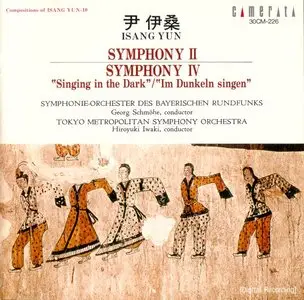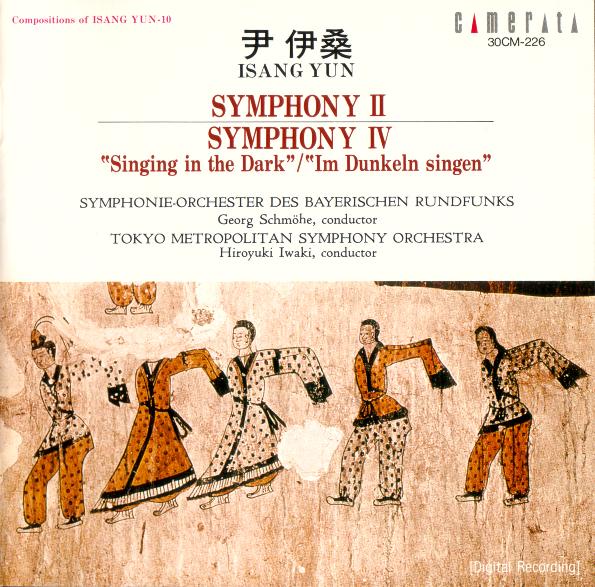Isang Yun (1917-1995 ): Symphonies II & IV
Avant-Garde | EAC (FLAC + CUE) (no LOG) | Complete Scans | 307 MB | Released 1986
Label: Camerata 30CM-226
Avant-Garde | EAC (FLAC + CUE) (no LOG) | Complete Scans | 307 MB | Released 1986
Label: Camerata 30CM-226
"A composer cannot view the world in which he lives with indifference. Human suffering, oppression, injustice… all that comes to me in my thoughts. Where there is pain, where there is injustice, I want to have my say through my music." - Isang Yun, 1983
Symphony No.2 (1984) for Orchestra [29:17]
1. I (10:46)
2. II (10:52)
3. III (7:39)
Symphonie Orchester des Bayerischen Rundfunks
(Cond.) Georg Schmöhe
1986.12.05
Symphony No.4 (1986) "Singing in the Dark" for Large Orchestra [31:13]
4. I (13:47)
5. II (17:26)
Tokyo Metropolitan Symphony Orchestra
(Cond.) Hiroyuki Iwaki
1986.11.13
Total time 60:48
Second Symphony: The searing drive and activity of the opening is sustained even whilst it accommodates less fractious moments. The central movement, of this three-movement symphony, inhabits a rather sterner sound world. It is opaque, forbidding even if Yun allows some Korean-sounding string writing to appear. The texture does lighten, some tinkling percussion and dream-like imagery and fluttering violins having their moment, before strong, decisive and hieratic brass writing sweeps in. There are more Korean string mouldings in the finale but accompanied once again by glowering brass. Yun treats his orchestra sectionally here to a powerful degree – and the action is frenetic, accompanied by some frankly bizarre percussive incidents, even though the end of the work is attractive and relatively peaceable.
The two-movement Fourth Symphony employs the Korean Sijo form in the opening for cellos and double basses – a kind of brisk melismatic movement. This is immediately interrupted and indeed contradicted by brutal brass and percussive interjections – and they drive on to an inexorable ascent. The slashing violins are answered by the brusque brass. Each thematic and orchestral impulse becomes explicit here, from the yearning of the Korean fiddles to the drum tattoos and the spitting, vicious brass. By contrast the calm reflection of the second movement rises to some peaks of drama. But things are very much reduced, both in dynamics and instrumental starkness. The forceful tutti close seems all the more pressing as a result. Jonathan Woolf
Packed via RAR, served by RS, redirected through tinyurl:



